- Home
- Jared Diamond
Guns, Germs, and Steel Page 4
Guns, Germs, and Steel Read online
Page 4
Besides sustaining scribes and inventors, food production also enabled farmers to support politicians (Chapter 14). Mobile bands of hunter-gatherers are relatively egalitarian, and their political sphere is confined to the band’s own territory and to shifting alliances with neighboring bands. With the rise of dense, sedentary, food-producing populations came the rise of chiefs, kings, and bureaucrats. Such bureaucracies were essential not only to governing large and populous domains but also to maintaining standing armies, sending out fleets of exploration, and organizing wars of conquest.
Part 4 (“Around the World in Five Chapters,” Chapters 15–19) applies the lessons of Parts 2 and 3 to each of the continents and some important islands. Chapter 15 examines the history of Australia itself, and of the large island of New Guinea, formerly joined to Australia in a single continent. The case of Australia, home to the recent human societies with the simplest technologies, and the sole continent where food production did not develop indigenously, poses a critical test of theories about intercontinental differences in human societies. We shall see why Aboriginal Australians remained hunter-gatherers, even while most peoples of neighboring New Guinea became food producers.
Chapters 16 and 17 integrate developments in Australia and New Guinea into the perspective of the whole region encompassing the East Asian mainland and Pacific islands. The rise of food production in China spawned several great prehistoric movements of human populations, or of cultural traits, or of both. One of those movements, within China itself, created the political and cultural phenomenon of China as we know it today. Another resulted in a replacement, throughout almost the whole of tropical Southeast Asia, of indigenous hunter-gatherers by farmers of ultimately South Chinese origin. Still another, the Austronesian expansion, similarly replaced the indigenous hunter-gatherers of the Philippines and Indonesia and spread out to the most remote islands of Polynesia, but was unable to colonize Australia and most of New Guinea. To the student of world history, all those collisions among East Asian and Pacific peoples are doubly important: they formed the countries where one-third of the modern world’s population lives, and in which economic power is increasingly becoming concentrated; and they furnish especially clear models for understanding the histories of peoples elsewhere in the world.
Chapter 18 returns to the problem introduced in Chapter 3, the collision between European and Native American peoples. A summary of the last 13,000 years of New World and western Eurasian history makes clear how Europe’s conquest of the Americas was merely the culmination of two long and mostly separate historical trajectories. The differences between those trajectories were stamped by continental differences in domesticable plants and animals, germs, times of settlement, orientation of continental axes, and ecological barriers.
Finally, the history of sub-Saharan Africa (Chapter 19) offers striking similarities as well as contrasts with New World history. The same factors that molded Europeans’ encounters with Africans molded their encounters with Native Americans as well. But Africa also differed from the Americas in all these factors. As a result, European conquest did not create widespread or lasting European settlement of sub-Saharan Africa, except in the far south. Of more lasting significance was a large-scale population shift within Africa itself, the Bantu expansion. It proves to have been triggered by many of the same causes that played themselves out at Cajamarca, in East Asia, on Pacific islands, and in Australia and New Guinea.
I harbor no illusions that these chapters have succeeded in explaining the histories of all the continents for the past 13,000 years. Obviously, that would be impossible to accomplish in a single book even if we did understand all the answers, which we don’t. At best, this book identifies several constellations of environmental factors that I believe provide a large part of the answer to Yali’s question. Recognition of those factors emphasizes the unexplained residue, whose understanding will be a task for the future.
The Epilogue, entitled “The Future of Human History as a Science,” lays out some pieces of the residue, including the problem of the differences between different parts of Eurasia, the role of cultural factors unrelated to environment, and the role of individuals. Perhaps the biggest of these unsolved problems is to establish human history as a historical science, on a par with recognized historical sciences such as evolutionary biology, geology, and climatology. The study of human history does pose real difficulties, but those recognized historical sciences encounter some of the same challenges. Hence the methods developed in some of these other fields may also prove useful in the field of human history.
Already, though, I hope to have convinced you, the reader, that history is not “just one damn fact after another,” as a cynic put it. There really are broad patterns to history, and the search for their explanation is as productive as it is fascinating.
PART ONE
FROM EDEN TO CAJAMARCA
CHAPTER 1
UP TO THE STARTING LINE
A SUITABLE STARTING POINT FROM WHICH TO COMPARE historical developments on the different continents is around 11,000 B.C.* This date corresponds approximately to the beginnings of village life in a few parts of the world, the first undisputed peopling of the Americas, the end of the Pleistocene Era and last Ice Age, and the start of what geologists term the Recent Era. Plant and animal domestication began in at least one part of the world within a few thousand years of that date. As of then, did the people of some continents already have a head start or a clear advantage over peoples of other continents?
If so, perhaps that head start, amplified over the last 13,000 years, provides the answer to Yali’s question. Hence this chapter will offer a whirlwind tour of human history on all the continents, for millions of years, from our origins as a species until 13,000 years ago. All that will now be summarized in less than 20 pages. Naturally, I shall gloss over details and mention only what seem to me the trends most relevant to this book.
Our closest living relatives are three surviving species of great ape: the gorilla, the common chimpanzee, and the pygmy chimpanzee (also known as bonobo). Their confinement to Africa, along with abundant fossil evidence, indicates that the earliest stages of human evolution were also played out in Africa. Human history, as something separate from the history of animals, began there about 7 million years ago (estimates range from 5 to 9 million years ago). Around that time, a population of African apes broke up into several populations, of which one proceeded to evolve into modern gorillas, a second into the two modern chimps, and the third into humans. The gorilla line apparently split off slightly before the split between the chimp and the human lines.
Fossils indicate that the evolutionary line leading to us had achieved a substantially upright posture by around 4 million years ago, then began to increase in body size and in relative brain size around 2.5 million years ago. Those protohumans are generally known as Australopithecus africanus, Homo habilis, and Homo erectus, which apparently evolved into each other in that sequence. Although Homo erectus, the stage reached around 1.7 million years ago, was close to us modern humans in body size, its brain size was still barely half of ours. Stone tools became common around 2.5 million years ago, but they were merely the crudest of flaked or battered stones. In zoological significance and distinctiveness, Homo erectus was more than an ape, but still much less than a modern human.
All of that human history, for the first 5 or 6 million years after our origins about 7 million years ago, remained confined to Africa. The first human ancestor to spread beyond Africa was Homo erectus, as is attested by fossils discovered on the Southeast Asian island of Java and conventionally known as Java man (see Figure 1.1). The oldest Java “man” fossils—of course, they may actually have belonged to a Java woman—have usually been assumed to date from about a million years ago. However, it has recently been argued that they actually date from 1.8 million years ago. (Strictly speaking, the name Homo erectus belongs to these Javan fossils, and the African fossils classified as Homo erectus may warrant a
different name.) At present, the earliest unquestioned evidence for humans in Europe stems from around half a million years ago, but there are claims of an earlier presence. One would certainly assume that the colonization of Asia also permitted the simultaneous colonization of Europe, since Eurasia is a single landmass not bisected by major barriers.
That illustrates an issue that will recur throughout this book. Whenever some scientist claims to have discovered “the earliest X”—whether X is the earliest human fossil in Europe, the earliest evidence of domesticated corn in Mexico, or the earliest anything anywhere—that announcement challenges other scientists to beat the claim by finding something still earlier. In reality, there must be some truly “earliest X,” with all claims of earlier X’s being false. However, as we shall see, for virtually any X, every year brings forth new discoveries and claims of a purported still earlier X, along with refutations of some or all of previous years’ claims of earlier X. It often takes decades of searching before archaeologists reach a consensus on such questions.
By about half a million years ago, human fossils had diverged from older Homo erectus skeletons in their enlarged, rounder, and less angular skulls. African and European skulls of half a million years ago were sufficiently similar to skulls of us moderns that they are classified in our species, Homo sapiens, instead of in Homo erectus. This distinction is arbitrary, since Homo erectus evolved into Homo sapiens. However, these early Homo sapiens still differed from us in skeletal details, had brains significantly smaller than ours, and were grossly different from us in their artifacts and behavior. Modern stone-tool-making peoples, such as Yali’s great-grandparents, would have scorned the stone tools of half a million years ago as very crude. The only other significant addition to our ancestors’ cultural repertoire that can be documented with confidence around that time was the use of fire.
No art; bone tool, or anything else has come down to us from early Homo sapiens except for their skeletal remains, plus those crude stone tools. There were still no humans in Australia, for the obvious reason that it would have taken boats to get there from Southeast Asia. There were also no humans anywhere in the Americas, because that would have required the occupation of the nearest part of the Eurasian continent (Siberia), and possibly boat-building skills as well. (The present, shallow Bering Strait, separating Siberia from Alaska, alternated between a strait and a broad intercontinental bridge of dry land, as sea level repeatedly rose and fell during the Ice Ages.) However, boat building and survival in cold Siberia were both still far beyond the capabilities of early Homo sapiens.
After half a million years ago, the human populations of Africa and western Eurasia proceeded to diverge from each other and from East Asian populations in skeletal details. The population of Europe and western Asia between 130,000 and 40,000 years ago is represented by especially many skeletons, known as Neanderthals and sometimes classified as a separate species, Homo neanderthalensis. Despite being depicted in innumerable cartoons as apelike brutes living in caves, Neanderthals had brains slightly larger than our own. They were also the first humans to leave behind strong evidence of burying their dead and caring for their sick. Yet their stone tools were still crude by comparison with modern New Guineans’ polished stone axes and were usually not yet made in standardized diverse shapes, each with a clearly recognizable function.
The few preserved African skeletal fragments contemporary with the Neanderthals are more similar to our modern skeletons than to Neanderthal skeletons. Even fewer preserved East Asian skeletal fragments are known, but they appear different again from both Africans and Neanderthals. As for the lifestyle at that time, the best-preserved evidence comes from stone artifacts and prey bones accumulated at southern African sites. Although those Africans of 100,000 years ago had more modern skeletons than did their Neanderthal contemporaries, they made essentially the same crude stone tools as Neanderthals, still lacking standardized shapes. They had no preserved art. To judge from the bone evidence of the animal species on which they preyed, their hunting skills were unimpressive and mainly directed at easy-to-kill, not-at-all-dangerous animals. They were not yet in the business of slaughtering buffalo, pigs, and other dangerous prey. They couldn’t even catch fish: their sites immediately on the seacoast lack fish bones and fishhooks. They and their Neanderthal contemporaries still rank as less than fully human.
Human history at last took off around 50,000 years ago, at the time of what I have termed our Great Leap Forward. The earliest definite signs of that leap come from East African sites with standardized stone tools and the first preserved jewelry (ostrich-shell beads). Similar developments soon appear in the Near East and in southeastern Europe, then (some 40,000 years ago) in southwestern Europe, where abundant artifacts are associated with fully modern skeletons of people termed Cro-Magnons. Thereafter, the garbage preserved at archaeological sites rapidly becomes more and more interesting and leaves no doubt that we are dealing with biologically and behaviorally modern humans.
Cro-Magnon garbage heaps yield not only stone tools but also tools of bone, whose suitability for shaping (for instance, into fishhooks) had apparently gone unrecognized by previous humans. Tools were produced in diverse and distinctive shapes so modern that their functions as needles, awls, engraving tools, and so on are obvious to us. Instead of only singlepiece tools such as hand-held scrapers, multipiece tools made their appearance. Recognizable multipiece weapons at Cro-Magnon sites include harpoons, spear-throwers, and eventually bows and arrows, the precursors of rifles and other multipiece modern weapons. Those efficient means of killing at a safe distance permitted the hunting of such dangerous prey as rhinos and elephants, while the invention of rope for nets, lines, and snares allowed the addition of fish and birds to our diet. Remains of houses and sewn clothing testify to a greatly improved ability to survive in cold climates, and remains of jewelry and carefully buried skeletons indicate revolutionary aesthetic and spiritual developments.
Of the Cro-Magnons’ products that have been preserved, the best known are their artworks: their magnificent cave paintings, statues, and musical instruments, which we still appreciate as art today. Anyone who has experienced firsthand the overwhelming power of the life-sized painted bulls and horses in the Lascaux Cave of southwestern France will understand at once that their creators must have been as modern in their minds as they were in their skeletons.
Obviously, some momentous change took place in our ancestors’ capabilities between about 100,000 and 50,000 years ago. That Great Leap Forward poses two major unresolved questions, regarding its triggering cause and its geographic location. As for its cause, I argued in my book The Third Chimpanzee for the perfection of the voice box and hence for the anatomical basis of modern language, on which the exercise of human creativity is so dependent. Others have suggested instead that a change in brain organization around that time, without a change in brain size, made modern language possible.
As for the site of the Great Leap Forward, did it take place primarily in one geographic area, in one group of humans, who were thereby enabled to expand and replace the former human populations of other parts of the world? Or did it occur in parallel in different regions, in each of which the human populations living there today would be descendants of the populations living there before the leap? The rather modern-looking human skulls from Africa around 100,000 years ago have been taken to support the former view, with the leap occurring specifically in Africa. Molecular studies (of so-called mitochondrial DNA) were initially also interpreted in terms of an African origin of modern humans, though the meaning of those molecular findings is currently in doubt. On the other hand, skulls of humans living in China and Indonesia hundreds of thousands of years ago are considered by some physical anthropologists to exhibit features still found in modern Chinese and in Aboriginal Australians, respectively. If true, that finding would suggest parallel evolution and multiregional origins of modern humans, rather than origins in a single Garden of Eden. The issue rema
ins unresolved.
The evidence for a localized origin of modern humans, followed by their spread and then their replacement of other types of humans elsewhere, seems strongest for Europe. Some 40,000 years ago, into Europe came the Cro-Magnons, with their modern skeletons, superior weapons, and other advanced cultural traits. Within a few thousand years there were no more Neanderthals, who had been evolving as the sole occupants of Europe for hundreds of thousands of years. That sequence strongly suggests that the modern Cro-Magnons somehow used their far superior technology, and their language skills or brains, to infect, kill, or displace the Neanderthals, leaving behind little or no evidence of hybridization between Neanderthals and Cro-Magnons.
THE GREAT LEAP Forward coincides with the first proven major extension of human geographic range since our ancestors’ colonization of Eurasia. That extension consisted of the occupation of Australia and New Guinea, joined at that time into a single continent. Many radiocarbon-dated sites attest to human presence in Australia / New Guinea between 40,000 and 30,000 years ago (plus the inevitable somewhat older claims of contested validity). Within a short time of that initial peopling, humans had expanded over the whole continent and adapted to its diverse habitats, from the tropical rain forests and high mountains of New Guinea to the dry interior and wet southeastern corner of Australia.

 Why Is Sex Fun?: The Evolution of Human Sexuality
Why Is Sex Fun?: The Evolution of Human Sexuality Guns, Germs, and Steel: The Fates of Human Societies
Guns, Germs, and Steel: The Fates of Human Societies Collapse: How Societies Choose to Fail or Succeed
Collapse: How Societies Choose to Fail or Succeed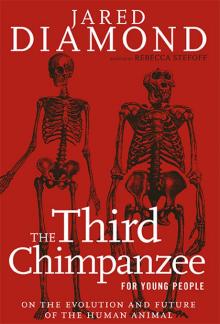 The Third Chimpanzee: The Evolution and Future of the Human Animal
The Third Chimpanzee: The Evolution and Future of the Human Animal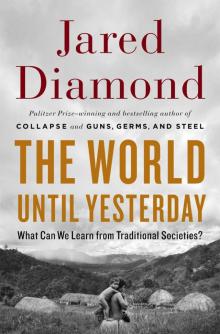 The World Until Yesterday: What Can We Learn From Traditional Societies?
The World Until Yesterday: What Can We Learn From Traditional Societies?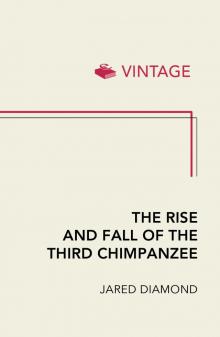 The Rise and Fall of the Third Chimpanzee
The Rise and Fall of the Third Chimpanzee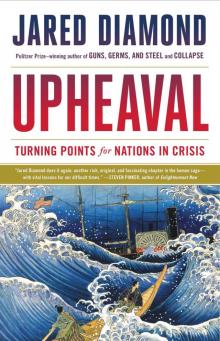 Upheaval: Turning Points for Nations in Crisis
Upheaval: Turning Points for Nations in Crisis Guns, Germs, and Steel
Guns, Germs, and Steel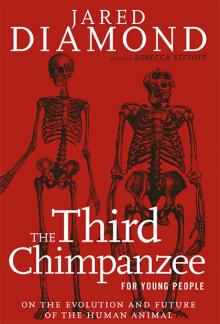 The Third Chimpanzee for Young People
The Third Chimpanzee for Young People Why Is Sex Fun?
Why Is Sex Fun?